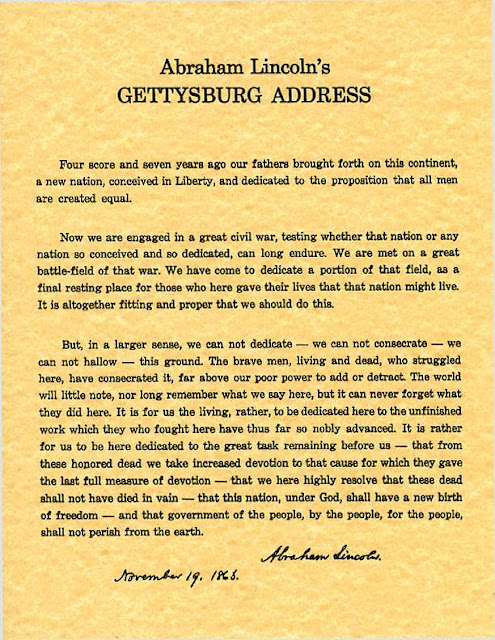Civil War
February 1861 -- The South Creates a Government.
At a convention in Montgomery, Alabama, the seven seceding states created the Confederate Constitution, a document similar to the United States Constitution, but with greater stress on the autonomy of each state. Jefferson Davis was named provisional president of the Confederacy until elections could be held.
 known opponent of slavery, was elected president, the South Carolina legislature perceived a threat. Calling a state convention, the delegates voted to remove the state of South Carolina from the union known as the United States of America. The secession of South Carolina was followed by the secession of six more states -- Mississippi, Florida, Alabama, Georgia, Louisiana, and Texas -- and the threat of secession by four more -- Virginia, Arkansas, Tennessee, and North Carolina. These eleven states eventually formed the Confederate States of America.
known opponent of slavery, was elected president, the South Carolina legislature perceived a threat. Calling a state convention, the delegates voted to remove the state of South Carolina from the union known as the United States of America. The secession of South Carolina was followed by the secession of six more states -- Mississippi, Florida, Alabama, Georgia, Louisiana, and Texas -- and the threat of secession by four more -- Virginia, Arkansas, Tennessee, and North Carolina. These eleven states eventually formed the Confederate States of America. March 1861 -- Lincoln's Inauguration.
 At Lincoln's inauguration on March 4, the new president said he had no plans to end slavery in those states where it already existed, but he also said he would not accept secession. He hoped to resolve the national crisis without warfare.
At Lincoln's inauguration on March 4, the new president said he had no plans to end slavery in those states where it already existed, but he also said he would not accept secession. He hoped to resolve the national crisis without warfare. April 1861 -- Attack on Fort Sumter.
When President Lincoln planned to send supplies to Fort Sumter, he alerted the state in advance, in an attempt to avoid hostilities. South Carolina, however, feared a trick; the commander of the fort, Robert Anderson, was asked to surrender immediately. Anderson offered to surrender, but only after he had exhausted his supplies. His offer was rejected, and on April 12, the Civil War began with shots fired on the fort. Fort Sumter eventually was surrendered to South Carolina.
April 1861 -- Four More States Join the Confederacy.
The attack on Fort Sumter prompted four more states to join the Confederacy. With Virginia's secession, Richmond was named the Confederate capitol.
June 1861 -- West Virginia Is Born.
Residents of the western counties of Virginia did not wish to secede along with the rest of the state. This section of Virginia was admitted into the Union as the state of West Virginia on June 20, 1863.
June 1861 -- Four Slave States Stay in the Union.
Despite their acceptance of slavery, Delaware, Kentucky, Maryland, and Missouri did not join the Confederacy. Although divided in their loyalties, a combination of political maneuvering and Union military pressure kept these states from seceding
May 1864 -- The Battle of Spotsylvania.
General Grant continued to attack Lee. At Spotsylvania Court House, he fought for five days, vowing to fight all summer if necessary.
June 1864 -- The Battle of Cold Harbor.
Grant again attacked Confederate forces at Cold Harbor, losing over 7,000 men in twenty minutes. Although Lee suffered fewer casualties, his army never recovered from Grant's continual attacks. This was Lee's last clear victory of the war.
May 1864 -- The Battle of Spotsylvania.
 June 1864 -- The Battle of Cold Harbor.
June 1864 -- The Battle of Cold Harbor.
Grant again attacked Confederate forces at Cold Harbor, losing over 7,000 men in twenty minutes. Although Lee suffered fewer casualties, his army never recovered from Grant's continual attacks. This was Lee's last clear victory of the war.
this summary decribes a breief summary of how the south started their goverment and how lincolin was going to end slavery and takes about the cold wars.


No comments:
Post a Comment